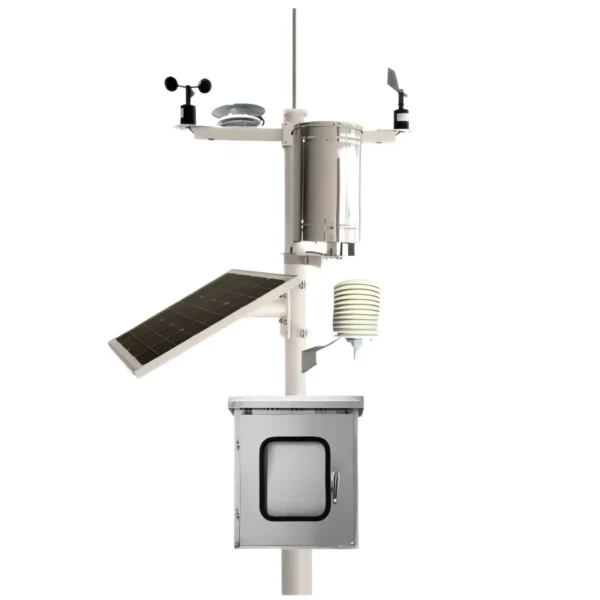
# Automatic Weather Station: Definition and Functionality
An Automatic Weather Station (AWS) is a sophisticated system designed to collect and record meteorological data without the need for constant human intervention. These stations are equipped with various sensors that measure environmental parameters such as temperature, humidity, wind speed, wind direction, rainfall, and atmospheric pressure. The data collected by an AWS is crucial for weather forecasting, climate research, and various applications in agriculture, aviation, and disaster management.
## Components of an Automatic Weather Station
An AWS typically consists of several key components:
– Sensors: These are the primary tools for measuring weather parameters. Common sensors include thermometers for temperature, hygrometers for humidity, anemometers for wind speed, wind vanes for wind direction, rain gauges for precipitation, and barometers for atmospheric pressure.
– Data Logger: This device records the data collected by the sensors. It can store data over extended periods and often includes features for data transmission.
– Power Supply: AWS units are usually powered by solar panels combined with batteries to ensure continuous operation, even in remote locations.
– Communication System: Many AWS units are equipped with wireless communication systems, such as GSM, satellite, or radio, to transmit data to a central database or directly to users.
## Functionality of an Automatic Weather Station
The primary function of an AWS is to provide accurate and timely weather data. Here’s how it works:
– Data Collection: Sensors continuously monitor environmental conditions and collect data at regular intervals.
– Data Processing: The data logger processes the raw data, often converting it into a usable format.
– Data Transmission: Processed data is transmitted to a central server or directly to end-users via the communication system.
– Data Analysis: The collected data is analyzed to generate weather forecasts, climate models, and other meteorological insights.
## Applications of Automatic Weather Stations
AWS units are used in a variety of fields:
– Agriculture: Farmers use AWS data to optimize irrigation, planting, and harvesting schedules.
– Aviation: Airports rely on AWS for real-time weather updates to ensure safe takeoffs and landings.
– Disaster Management: AWS data helps in predicting and mitigating the impact of natural disasters like hurricanes, floods, and droughts.
– Climate Research: Scientists use long-term AWS data to study climate patterns and changes.
## Advantages of Automatic Weather Stations
The use of AWS offers several benefits:
– Accuracy: Automated systems reduce human error, providing more reliable data.
– Efficiency: Continuous monitoring ensures that data is always available, even in remote or harsh environments.
– Cost-Effectiveness: Once installed, AWS units require minimal maintenance, making them a cost-effective solution for long-term weather monitoring.
– Real-Time Data: The ability to transmit data in real-time allows for immediate analysis and response, which is crucial for time-sensitive applications.
In conclusion, Automatic Weather Stations play a vital role in modern meteorology and various other fields. Their ability to provide accurate, real-time data makes them indispensable tools for weather forecasting, climate research, and numerous practical applications. As technology advances, the functionality and applications of AWS are expected to expand, further enhancing their importance in our daily lives.
Keyword: what is automatic weather station